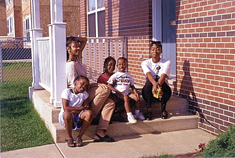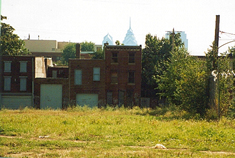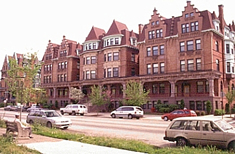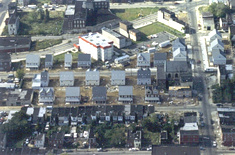![]()
The places on the PHILADELPHIA NEIGHBORHOOD RECOVERY TOUR are, for the most part, very different from well-known Philadelphia attractions such as the Liberty Bell and Independence Hall. Many are "off the beaten track" and not ordinarily seen by visitors to Philadelphia. Please be prepared for the following differences between the Philadelphia Neighborhood Recovery Tour and more conventional experiences.
![]()
You
will encounter real urban environments. Although none of the tour stops
is inherently unsafe, most of them are located in communities that are
"in transition" and have experienced a high degree of economic
hardship and need for social assistance. When you visit these places,
be attentive and careful, as you would in any unfamiliar section of a
big city. Directions are provided for travel by car and by mass transit.
Please examine the options, print out the directions, and follow them
wisely. Acquiring a street map or mass-transit map is a good idea. We
suggest that first-time visits be made during daytime hours and that,
in many cases, your walks be limited to the vicinity of the tour site.
![]()
Because
most of the tour stops were not developed with visitors in mind, they
do not offer the amenities one would expect on a conventional tour. There
are no information centers, tour guides, rest rooms, snack bars, or gift
shops. On the other hand, most of the stops are located near places that
routinely accommodate visitors. For example, the Philadelphia Zoo is a
few minutes' drive from the Brentwood Apartments (Tour Stop 17). Temple
University is across the street from the northern boundary of Yorktown
(Tour Stop 4). As you browse the tour-stop section of the Philadelphia
Neighborhood Recovery Tour, click on the tab "Nearby Points of Interest,"
which provides links to other places you may wish to visit.
![]()
Nearly
all of the tour stops are located on residential blocks where streets
and sidewalks are the only public places. Except for the first and last
stops, the tour sites are in fact private property. Please be considerate
of the residents. Also bear in mind that curious visitors may be a rarity
in these neighborhoods. Although community members may be surprised by
your presence, it is very unlikely that anyone will react negatively to
a visitor who is respectful and not intrusive. You may even find the opportunity
for some information conversation. Typically, Philadelphians are proud
of their neighborhoods and enjoy sharing their thoughts and knowledge.
![]()
Most
of the stops are formerly vacant and neglected locations within once-thriving
residential communities. These areas experienced a catastrophic loss of
jobs and population during the late-20th century. As you travel from one
stop to another, you will find that deterioration and abandonment are
still very much in evidence. You may be surprised by the amount of investment
still needed to improve the many blocks between our showcased ventures.
![]()
All
of the tour stops fall within Philadelphia's city limits. West Philadelphia
and North Philadelphia are loose geographic locations, not separate municipalities.
Nonetheless, do not plan to travel on foot (except for in or near Center
City) nor to complete the tour in one day. Some tour stops are separated
by only a few blocks, but many are a mile or more apart. For a leisurely
half-day visit, try a selection of four to six stops, allowing time to
look over each development venture and its contextual streetscape.




![]()
TOP • NEXT PAGE • BACK • P.N.R.T. HOME
